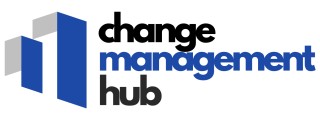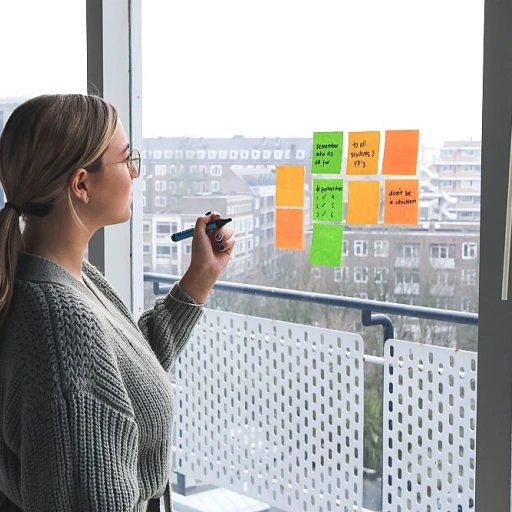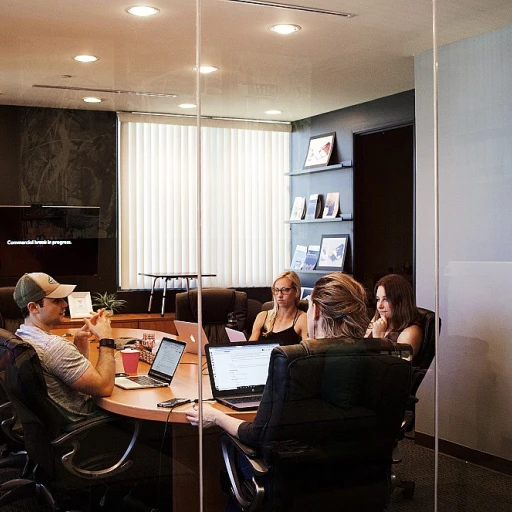
Understanding the Importance of Elite Retention
Recognizing the Essential Nature of Retaining Elite Talent
In today’s competitive business landscape, ensuring the retention of elite talent is critical for sustained success and growth. Elite retention isn't just a buzzword; it represents a carefully structured approach to preserving the most valuable asset of any organization: its people. Employee retention is not only about minimizing turnover rates but also about fostering a sense of belonging that makes employees feel understood and valued. The advantages of implementing effective retention strategies extend beyond the internal workings of a company. Retaining top employees directly impacts customer experience and loyalty. When employees feel engaged and invested in their work, it naturally enhances the relationship with customers, as satisfied employees tend to provide superior service. By recognizing the vital role elite employees play within both the competitive environment and company culture, organizations are better positioned to leverage their skills and creativity over the long term. Keeping elite talent helps maintain consistent business operations and supports continuous professional development opportunities, encouraging a cycle of growth and improvement. Exploring best practices in retention strategies can offer insights into how to foster an engaging and supportive work environment, ultimately enhancing the business’s overall performance. For more in-depth motivational insights into effective management and how they relate to talent retention, explore the relevance of motivation in management. Engaging employees and keeping them motivated plays a pivotal role in their decision to stay with a company and continue contributing effectively.Identifying Key Challenges in Talent Retention
Recognizing Barriers to Retaining Elite Employees
Retaining top talent in any industry is a multifaceted challenge. Organizations face numerous hurdles when it comes to elite retention, each of which requires a tailored strategy for effective mitigation. Recognizing these challenges is the first step in formulating a robust retention strategy.
- High employee turnover rates: One of the most prevalent challenges is managing turnover rates. High turnover can significantly disrupt the workflow and community within a company. It's crucial to root out the causes of turnover to create an impactful retention strategy.
- Lack of employee engagement: When employees feel disconnected from their work or workplace, they are more likely to leave. Boosting employee engagement through active means such as motivational insights and interactive content is vital.
- Inadequate feedback mechanisms: Failing to provide or gather meaningful feedback can leave employees feeling undervalued. Implementing regular survey initiatives ensures that employees feel heard and appreciated, which can help in keeping the retention rates high.
- Insufficient life balance support: Work life balance has become a crucial factor in the modern work environment. Employers need to adopt practices that support a healthy work life balance to retain elite employees over the long term.
Addressing these challenges involves a comprehensive understanding of what prevents employees from staying with the company. By implementing best practices in these areas, businesses can improve their customer and employee experience, leading to increased loyalty and a more stable workforce.
Effective Communication Strategies
Fostering Open Dialogue to Enhance Engagement
Open communication lies at the heart of effective retention strategies. Engaging employees in meaningful dialogue not only enhances their experience but can dramatically reduce turnover rates. Through open channels of communication, businesses can ensure that employees feel valued and part of the larger community, which can directly impact retention rates.
To cultivate an environment of transparency and trust, companies should consider implementing regular feedback mechanisms. Utilizing tools like surveys and interactive content can provide employees with a platform to voice their concerns and share their experiences. This feedback loop allows management to make informed decisions that will benefit both employee and customer experience, fostering an elite retention environment.
Effective communication strategies also involve clear and consistent messaging. This ensures all team members are aligned with the company's goals and objectives. By making employees feel part of the mission, a business increases engagement, which can lead to long-term loyalty and a decrease in employee turnover. For more in-depth strategies on managing these communication initiatives, visit our article on representative management in change initiatives.
Creating a Supportive Work Environment
Fostering a Thriving Work Environment
Cultivating a supportive work environment is crucial for elite retention, as it directly impacts employee engagement and retention rates. Companies focused on this strategy often witness reduced employee turnover and a marked improvement in customer experience. Here are some best practices to implement:- Encourage Open Communication: Establishing a culture where employees feel comfortable sharing their thoughts and concerns without fear of reprisal is critical. Regular feedback sessions, whether through one-on-one meetings or surveys, can provide valuable insights into the workplace climate and help preempt potential issues.
- Promote Work-Life Balance: Ensuring employees have a healthy work-life balance demonstrates that a company values its team members as individuals, not just workers. Flexible work hours, remote work options, and wellness programs contribute to this balance and enhance employee loyalty.
- Build a Sense of Community: Fostering a community where employees feel connected can enhance their sense of belonging. Team-building activities and initiatives that encourage collaboration can strengthen these bonds, leading to a more harmonious and productive work environment.
- Create Inclusive Work Policies: An inclusive workspace makes everyone feel valued. Diverse teams often bring innovative ideas, enriching the business strategy and improving customer retention rates as they better understand diverse customer needs.
Incentives and Recognition Programs
Designing Incentives to Enhance Employee Loyalty
Creating a workplace where employees feel valued and appreciated can significantly boost retention and engagement. When it comes to elite retention strategies, incentives and recognition programs are vital components. These initiatives not only acknowledge the hard work of employees but also encourage continued excellence and commitment, contributing to lower turnover rates.
Incentives can take various forms, each tailored to fit the unique culture and objectives of the business. Here are some effective strategies:
- Recognition Platforms: Utilize digital platforms to recognize achievements publicly. When employees receive acknowledgment from their peers, it strengthens their sense of community and belonging.
- Loyalty Programs: Introduce membership programs that offer exclusive benefits as a reward for long-term commitment. These programs can enhance employee engagement and foster a culture of loyalty.
- Work-Life Balance Benefits: Flexible work arrangements and life balance initiatives will help create a supportive work environment. Employees feel more motivated to stay with companies that respect their personal needs.
- Performance-Based Bonuses: Encourage high performance with bonuses tied to individual and team achievements. Transparent criteria for these bonuses will ensure fairness and motivate employees to strive for excellence.
For these programs to be successful, it is crucial to gather feedback from employees through surveys and other interactive content. Engaging team members in the decision-making process not only tailors the incentives to their preferences but also fosters a sense of ownership and commitment. This approach will help improve employee experiences, reduce turnover, and ensure that retention strategies are effective and aligned with the company's goals.
Continuous Professional Development Opportunities
Professional Development: A Key to Retaining Elite Talent
In today's competitive market, continuous professional development remains a cornerstone of effective retention strategies. When employees feel they are growing and learning, they are more likely to remain loyal, reducing employee turnover. Providing opportunities for development is not just a nice-to-have but a strategic necessity for companies aiming to cultivate a motivated and engaged workforce. Offering tailored learning paths and training sessions can significantly boost employee engagement. Employees who see a clear path for growth within the company feel a sense of belonging and community. This not only helps in creating a positive work atmosphere but also contributes to higher retention rates. Businesses can implement several best practices to support continuous professional development:- Implement Feedback Mechanisms: Regular feedback and surveys can help identify areas where employees seek growth, enabling personalized development strategies.
- Create Interactive Content: Utilizing dynamic and engaging content formats for training can improve learning experiences and make development more meaningful.
- Balance Work-Life: Encourage a healthy work-life balance while pursuing professional growth. When employees can manage life and work responsibilities effectively, they are more satisfied and likely to stay with the company.













